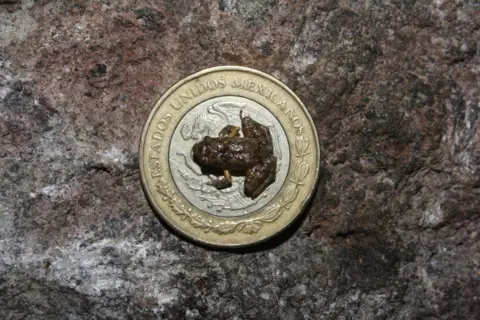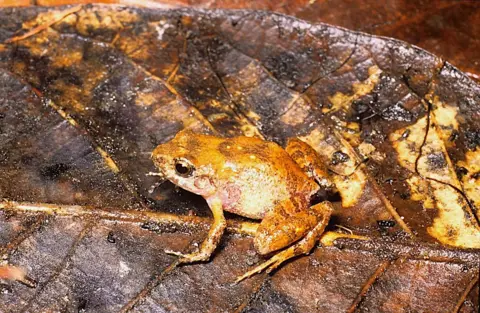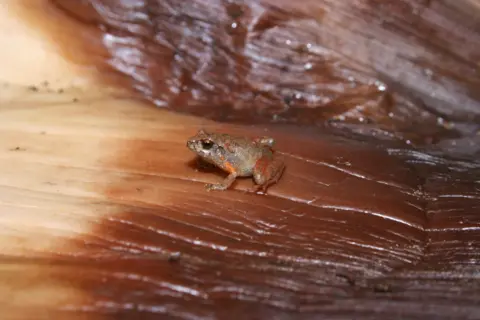Six new species of miniature frog discovered in Mexico
 Eric Smith/The University of Texas at Arlington
Eric Smith/The University of Texas at ArlingtonSix new species of miniature frogs have been discovered in the forests of Mexico.
The species are so tiny that they fit on top of a British 50p coin with lots of room to spare.
They are among the smallest frogs in the world and are no larger than 15 millimetres (0.6 inches).
They were undetected for so long due to their small stature, colouring and their similarity to existing species.
"These frogs live in the dark, humid leaf litter of the forests and we don't really know anything about what goes on there. We don't understand their behaviour, how they socialise, or how they breed," says Tom Jameson, a researcher at the University of Cambridge.
Leaf litter is made up of dead plants or leaves that have fallen to the ground.
The species are not widespread across the country and are mostly found in pine-oak forests, in the Sierra Madre del Sur region in southern Mexico.
 The University of Texas at Arlington
The University of Texas at ArlingtonScientists want the species to be classified as endangered, because the frogs' habitat is declining in quality and they haven't been found in many regions.
"We need to make sure that they don't just get wiped off the map because no-one even knows they're there," says Dr Jameson.
It is believed that they play an important role in the ecosystem as a source of food.
The frogs face multiple threats from habitat loss and climate change, to a deadly fungal disease that is wiping out amphibian populations across the world.
Many of them live in a very small area, for example in one small forest on a single mountainside.
 The University of Texas at Arlington
The University of Texas at ArlingtonSize was not the only barrier to the frogs' discovery. They live in territory occupied by armed groups linked to serious crime and violence.
Their presence, typically associated with large drug cartels, made areas of Mexico too dangerous to visit, preventing the researchers looking for frogs in some parts of the country.
"Despite the progress made in identifying the new species, more research is needed to understand the diversity of miniature amphibians in Mexico," says Professor Eric Smith from the University of Texas, US.
The researchers are hopeful that there is a future for the tiny frogs.
They hope to work with the government and non-government organisations in Mexico to create connected zones where the six new species live.
This would potentially give the frogs a better chance of survival because their habitats would be part of a large, interconnected area looked after by conservationists.
Scientists at the University of Texas in Arlington, and researchers from the University of Cambridge and London's Natural History Museum made the discovery.
